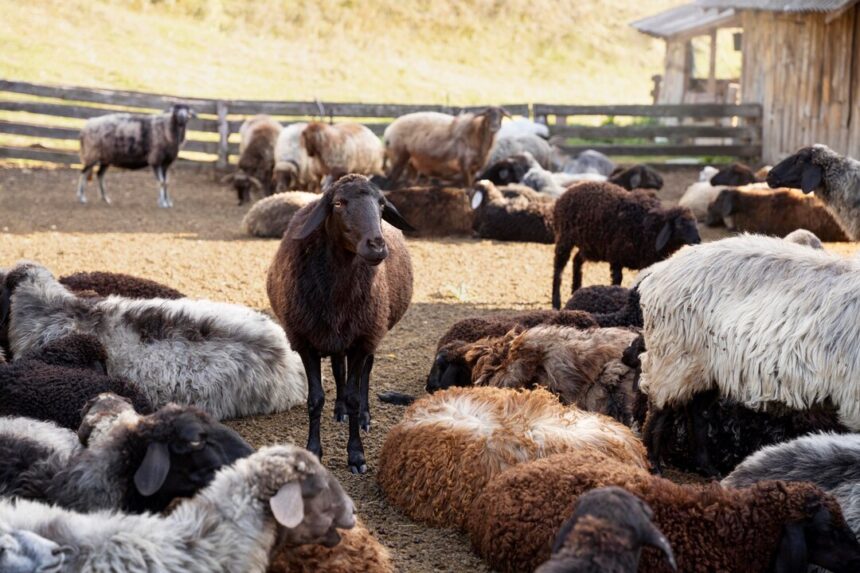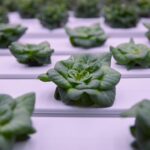Livestock farming is a cornerstone of agricultural systems worldwide, providing meat, milk, eggs, and other products. Enhancing livestock productivity is essential for meeting growing demands while maintaining animal health and welfare. One of the most effective ways to achieve this is by investing in the right equipment. Modern livestock farming tools and technologies can streamline operations, reduce labor, and improve the overall well-being of animals, which directly impacts productivity.
Feeding Equipment
Proper nutrition is fundamental to livestock health and productivity. Feeding equipment such as automated feeders, silage cutters, and feed mixers helps ensure animals receive balanced diets in the right quantities.
Automated feeders save time and reduce labor by delivering precise portions of feed at scheduled intervals. These systems also prevent overfeeding or underfeeding, leading to healthier animals and better growth rates. Feed mixers are invaluable for preparing uniform rations, especially in dairy and beef operations where nutrient consistency directly affects milk production or weight gain.
Watering systems are equally important. Automatic waterers provide a constant supply of clean water, encouraging animals to drink more and stay hydrated, which is vital for optimal productivity. Modern systems also monitor water intake, helping farmers identify potential health issues early.
Housing and Shelter Equipment
Comfortable and safe housing is essential for livestock health. Well-designed barns, pens, and shelters protect animals from extreme weather conditions, reduce stress, and prevent diseases. Livestock housing equipment, such as ventilation systems, heating, and cooling units, ensures animals remain in a comfortable environment year-round.
Ventilation systems regulate air quality, reducing the risk of respiratory diseases and heat stress. In colder climates, heating systems keep animals warm and prevent frostbite, while cooling systems, such as fans and misting units, are crucial in hot environments to prevent heatstroke.
Automated manure removal systems also contribute to better housing conditions by keeping pens clean, reducing odors, and minimizing the risk of disease outbreaks. Clean environments improve animal comfort, leading to better growth and production rates.
Milking and Egg Collection Equipment
For dairy and poultry farmers, productivity depends heavily on efficient milking and egg collection processes. Milking machines reduce the time and labor required for milking while ensuring consistency and hygiene. These machines also minimize stress on animals, which can increase milk yield and quality. Advanced systems with sensors can monitor milk composition and quantity, providing valuable insights into animal health and productivity.
In poultry farming, automated egg collection systems improve efficiency and reduce the risk of egg breakage. These systems transport eggs directly from nesting areas to storage units, maintaining cleanliness and reducing labor costs.
Health Monitoring and Management Equipment
Healthy animals are productive animals. Modern health monitoring tools, such as wearable sensors and smart collars, allow farmers to track vital signs, activity levels, and behavior in real time. These devices can detect early signs of illness, heat stress, or breeding readiness, enabling prompt interventions that prevent productivity losses.
Vaccination and medication equipment, such as automatic syringes and drench guns, ensure accurate dosages and reduce stress during administration. Proper health management minimizes disease outbreaks, reduces mortality rates, and improves overall herd performance.
Breeding and Reproduction Tools
Improving reproduction rates is a key factor in increasing livestock productivity. Tools like artificial insemination (AI) kits and ultrasound scanners for pregnancy detection help farmers optimize breeding programs. AI reduces the costs and logistics of maintaining a large number of breeding males while improving genetic quality.
Pregnancy detection equipment allows farmers to monitor reproductive progress and identify issues early, ensuring successful calving or lambing rates. Advanced tools like hormone synchronization kits further streamline breeding cycles, ensuring animals reproduce efficiently.
Transportation and Handling Equipment
Efficient handling and transportation systems reduce stress and injury to livestock during movement. Chutes, gates, and loading ramps are essential for guiding animals safely and minimizing handling time. Proper handling equipment ensures that animals remain calm, which is critical for maintaining productivity, particularly in meat production.
Trailers designed for livestock transport ensure animals are moved safely and comfortably, reducing stress and the risk of injuries. Well-ventilated and padded trailers provide the necessary comfort and protection during transit, whether it’s between pastures or to processing facilities.
Energy-Efficient Equipment
Many modern livestock operations integrate renewable energy solutions such as solar-powered water pumps and lighting systems. These energy-efficient tools reduce operational costs while ensuring consistent access to water, lighting, and other essentials. Renewable energy systems also align with sustainable farming practices, which are increasingly important for consumers and regulatory bodies.
Investing in the right equipment is a game-changer for livestock farmers seeking to boost productivity. From feeding and housing to health monitoring and transportation, modern tools streamline operations, enhance animal welfare, and improve efficiency. By carefully selecting equipment tailored to their specific needs, farmers can create a productive, sustainable, and profitable livestock operation. Healthy, well-managed animals not only yield better results but also contribute to the long-term success of the farm.









